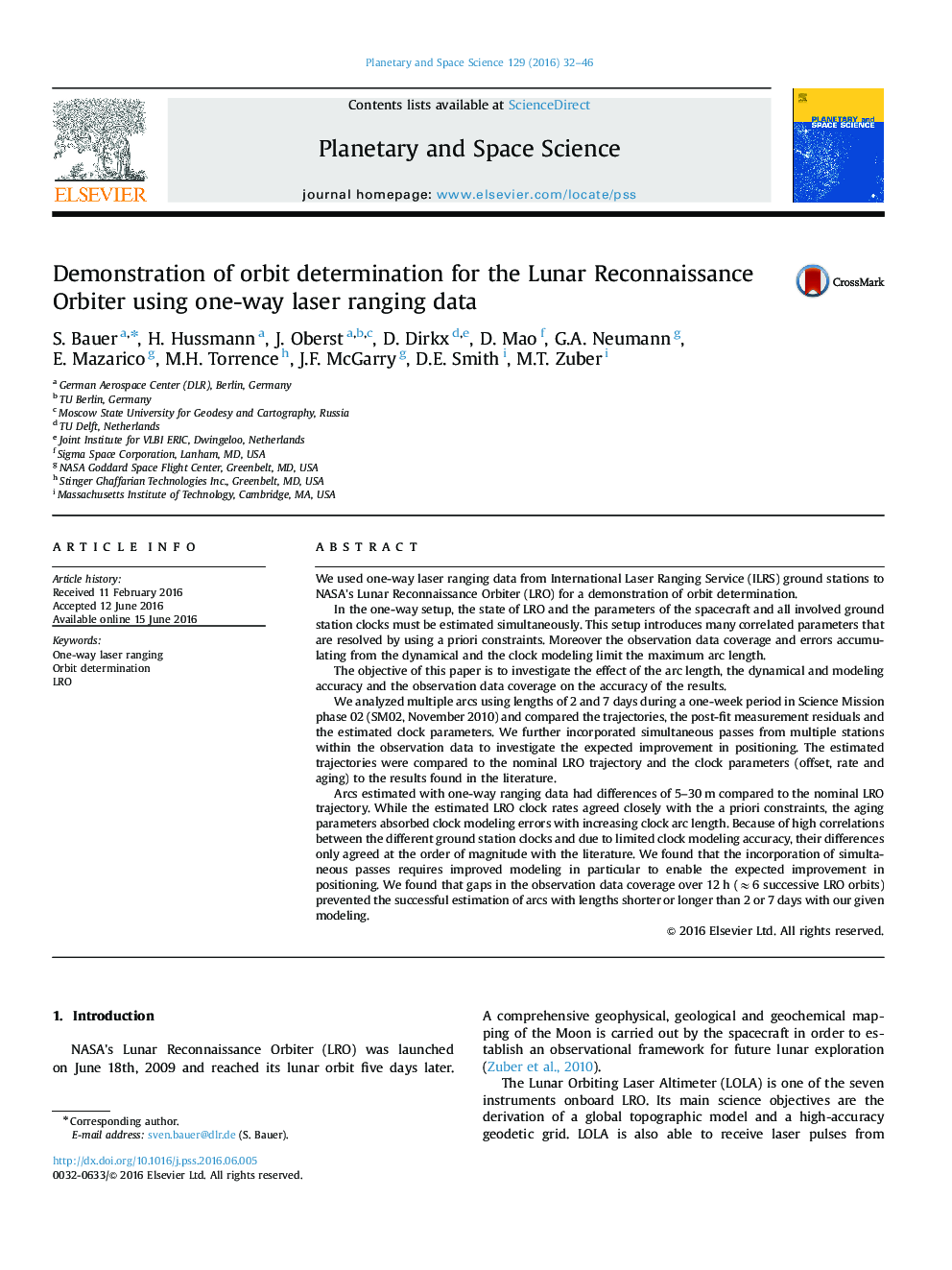| کد مقاله | کد نشریه | سال انتشار | مقاله انگلیسی | نسخه تمام متن |
|---|---|---|---|---|
| 1780853 | 1523911 | 2016 | 15 صفحه PDF | دانلود رایگان |
We used one-way laser ranging data from International Laser Ranging Service (ILRS) ground stations to NASA's Lunar Reconnaissance Orbiter (LRO) for a demonstration of orbit determination.In the one-way setup, the state of LRO and the parameters of the spacecraft and all involved ground station clocks must be estimated simultaneously. This setup introduces many correlated parameters that are resolved by using a priori constraints. Moreover the observation data coverage and errors accumulating from the dynamical and the clock modeling limit the maximum arc length.The objective of this paper is to investigate the effect of the arc length, the dynamical and modeling accuracy and the observation data coverage on the accuracy of the results.We analyzed multiple arcs using lengths of 2 and 7 days during a one-week period in Science Mission phase 02 (SM02, November 2010) and compared the trajectories, the post-fit measurement residuals and the estimated clock parameters. We further incorporated simultaneous passes from multiple stations within the observation data to investigate the expected improvement in positioning. The estimated trajectories were compared to the nominal LRO trajectory and the clock parameters (offset, rate and aging) to the results found in the literature.Arcs estimated with one-way ranging data had differences of 5–30 m compared to the nominal LRO trajectory. While the estimated LRO clock rates agreed closely with the a priori constraints, the aging parameters absorbed clock modeling errors with increasing clock arc length. Because of high correlations between the different ground station clocks and due to limited clock modeling accuracy, their differences only agreed at the order of magnitude with the literature. We found that the incorporation of simultaneous passes requires improved modeling in particular to enable the expected improvement in positioning. We found that gaps in the observation data coverage over 12 h (≈6 successive LRO orbits) prevented the successful estimation of arcs with lengths shorter or longer than 2 or 7 days with our given modeling.
Journal: Planetary and Space Science - Volume 129, 15 September 2016, Pages 32–46
